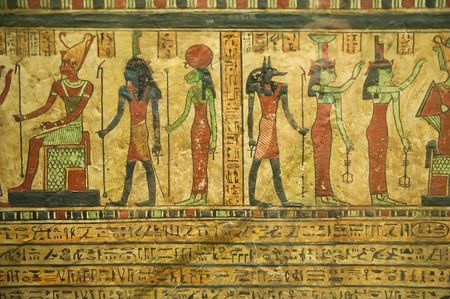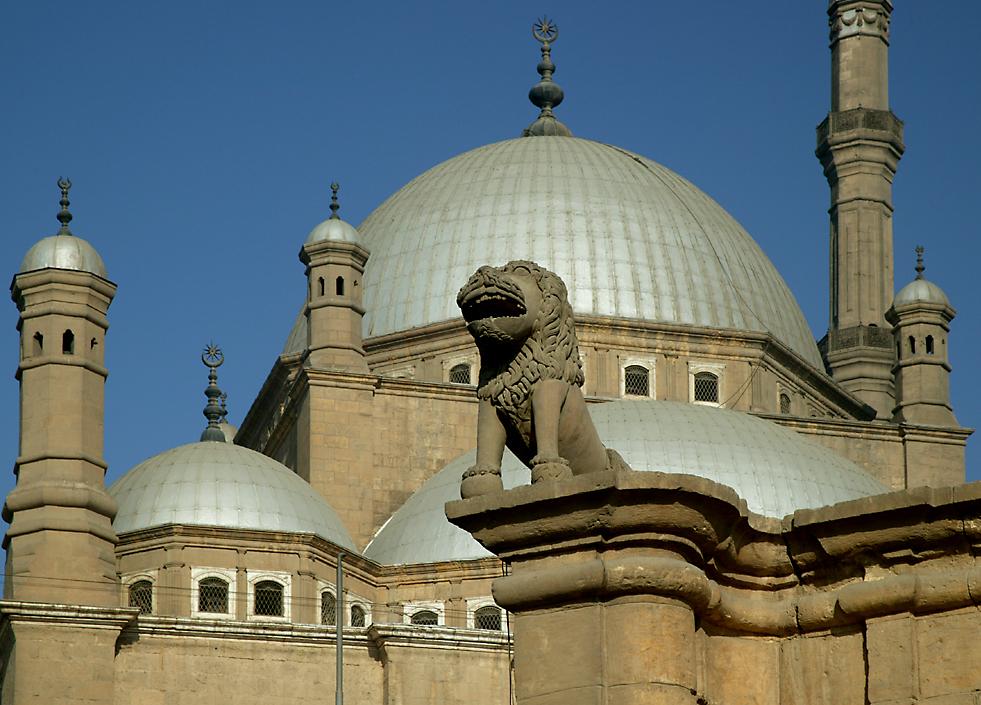Religion
 |
| Egyptian gods on Hieroglyphics [1] |
Religion formed the center of Ancient Egyptian society, and
continues to encompass many aspects of Egyptian life today. Thousands of years
ago, numerous Egyptians focused on a polytheistic form of religion that
worshiped many gods at the same time. Examples of these are Re the sun-god,
Seth the storm-god, Nut the sky-goddess, and Geb the earth-god[2].
Each of these gods had different powers within the Egyptian realm, controlling
whatever area they represented. To worship each deity, people would sacrifice
animals, pray, and make idols.
However, some Egyptians during ancient times believed that
Christ was savior of the world. This is seen specifically in the Bible’s New
Testament, where it is clear that there was division amongst followers of God
and followers of gods. Exodus 7:5 explains this stark difference in beliefs,
saying that “The Egyptians shall know that I am the Lord, when I stretch out My hand on Egypt and bring out the sons of
Israel from their midst” (NASB). God was showing His almighty power over the
Egyptians and their man made idols. This is polytheism versus monotheism at the
very root, displaying the difference that God’s children have as compared to
those who believe in many created gods.
 |
| St. Georges traditional Coptic Church [4] |
 |
| Muslim Mosque in Alexandria [3] |
Today religion within the nation of Egypt offers a bit more differentiation.
Modern citizens are typically either Coptic Christians or Muslims depending on
beliefs and familial heritage. Islam is the main religion of Egypt, having over
94% of its people professing the faith[5].
Because this is such a large faith in this region, Mosques cover the entire
area, allowing Muslims to pray five times a day and visit a Mosque on the holy
day of Friday. Another common ritual within Islam is the celebration of Ramadan.
Observant Muslims will fast from sunrise to sunset for an entire month to
remember the time when God revealed verses of the Qur'an to Muhammad[6]. Coptic
Christianity makes up the majority of the other 6% of religion in Egypt [5].
This group of Christians display the traditional Orthodox Church within Egypt.
Their beliefs follow those of Saint Mark, who brought the gospel to this
nation. Members of the church proclaim that God is the almighty divine being,
having one all-powerful nature[7].
Even though both Coptic’s and Muslims have religious freedom
under Egypt’s constitution, many rights are infringed upon by the government.
Any religious practice that does not follow Islamic Law is prohibited and able
to be prosecuted against[8].
There is little tolerance from both sides, creating a troubled relationship
between the two religions. Muslims continue to demand complete enactment of
Islamic Law by Coptic Christians, who see it as a threat to all of their
political, physical, social, and economic well-being[9].
Such tension has led to various attacks, clashes, and violent battles.
Origin Myths
 |
| Atum, god of Creation |
Throughout the years, many myths have been passed down on
the origins of life and this world. One of the most popular Egyptian myths is
the Heliopolitan creation story. This story begins with the authoritative god
named Atum who created his son and daughter, Shu (air) and Tefnut (moisture). They also then had children Geb and Nut, the
god and goddess of earth and sky respectively. Each of these deities continued
to have more children until a conflict arose, each sibling fighting with the
others, creating struggles in the Egyptian region. Each of the characters
within this myth represent a conflict within nature, including the Nile, fertile
valley, storms, and desert[11].
[1] Fusco,
Hunter. Papyrus. February 2011. Hieroglyphics,
Egypt.
[2] Angela P. Thomas, Egyptian Gods and Myths (Buckinghamshire: Shire Publications, 1986), 38-40.
[3]
Seaman, Richard. Highlights of Egypt.
[4]
PanRamio. St. George Coptic Church,
Heliopolis. December 2013. Cairo.
[5] TechBooks,
The Middle East (Washington DC: CQ
Press, 2005), 222.
[6] Diane
Watts, “Cairo: Religion and Faith in Modern Cairo”, UTexas. Accessed April 7,
2016, http://www.liberty.edu/academics/graduate/writing/?PID=11954.
[7]The
Coptic Network, “The Christian Coptic Orthodox Church of Egypt”, (Jan 2006),
accessed April 7, 2016,http://www.coptic.net/EncyclopediaCoptica/.
[8]
“Egypt- Religions”, Nations Encyclopedia, (2016), accessed April 7, 2016, http://www.nationsencyclopedia.com/Africa/Egypt-RELIGIONS.html.
[9] TechBooks,
The Middle East (Washington DC: CQ
Press, 2005), 235.
[10] Dhal,
Jeff. Atum, an Ancient Egyptian god of
Creation. December 2007.
[11] John
Baines and Leonard H. Lesko and David P. Silverman, Religion in Ancient Egypt:
Gods, Myths, and Personal Practice (Ithaca: Cornell University, 1991), 93.
No comments:
Post a Comment